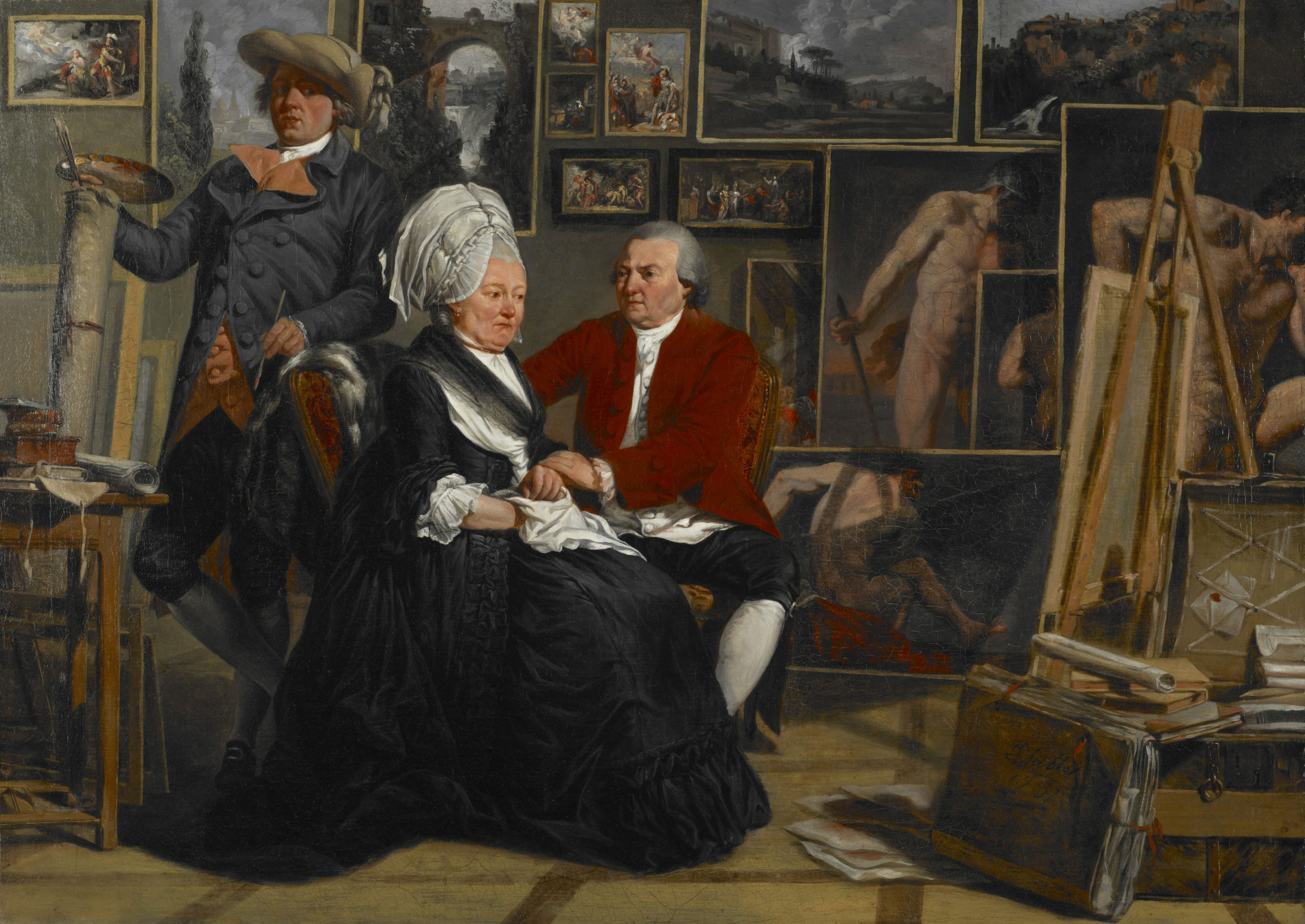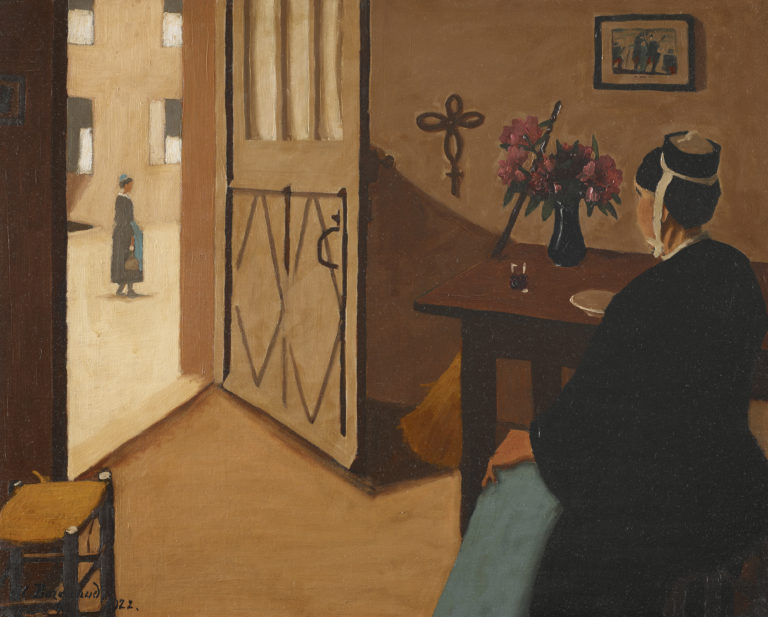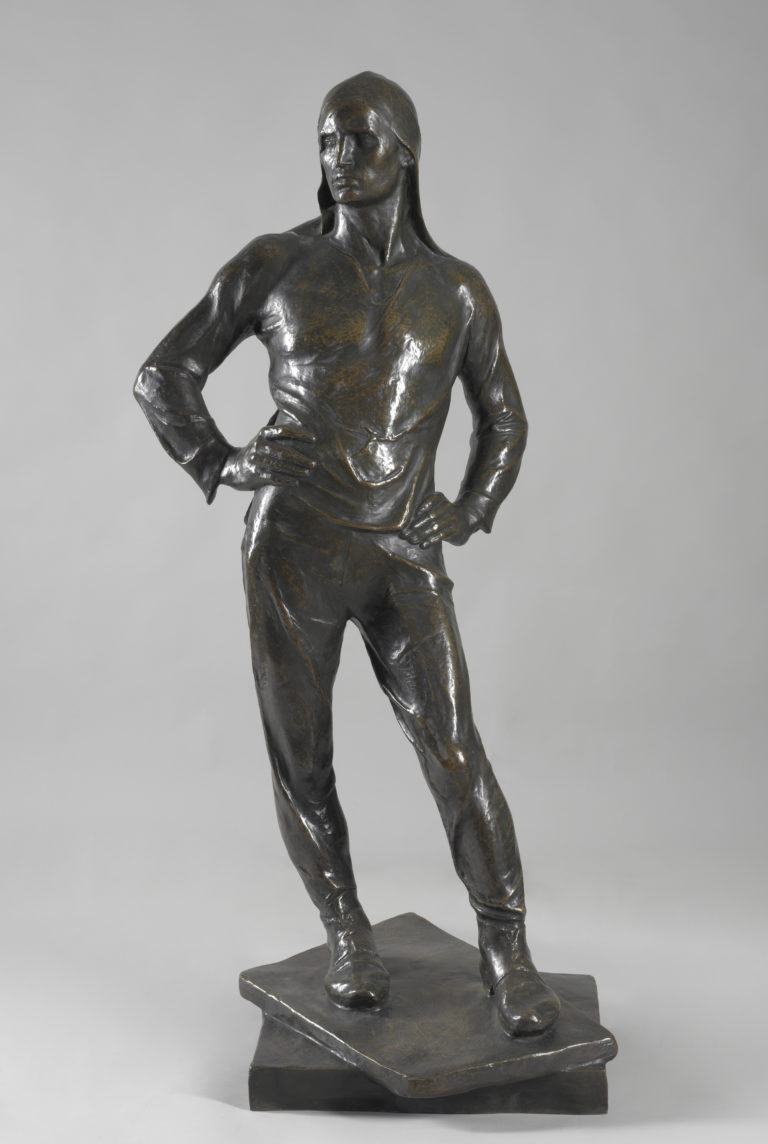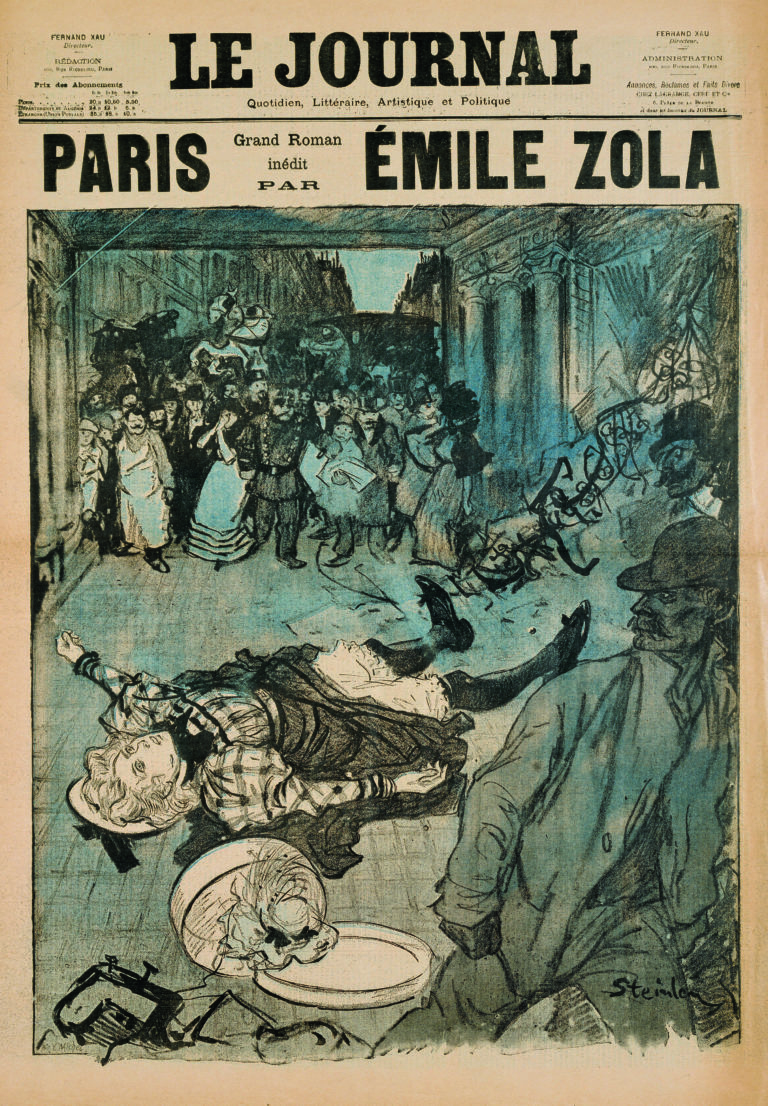Bibliography
Anne van de Sandt, Les frères Jacques et François Sablet. Collections du Musée des Beaux-Arts de Lausanne, Les Cahiers du Musée des Beaux-Arts de Lausanne n. 19, 2015: n. 5.
Anne van de Sandt et alii, Les frères Sablet (1775-1815). Peintures, dessins, gravures, exh. cat. Nantes, Musées départementaux de Loire-Atlantique, Lausanne, Musée cantonal des Beaux-Arts, Rome, Palazzo Braschi, Rome, Carte Segrete, 1985: n. 7.




Jacques Sablet was thirty-two when he took the painful decision to move on from history painting, having moved to Rome in a failed attempt to make a name for himself in what was then a major genre. This painting, dating from a visit to Lausanne in 1781, is worth a thousand words in capturing his doubts and worries about his future.
The studio walls are covered in history paintings and landscapes, offering an overview of Sablet’s career to date. Among them are sketches for La mort de Pallas (The Death of Pallas), which won first prize at the Parma art contest in 1778, and his 1779 Allégorie de la République de Berne (Allegory of the Republic of Bern) – an attempt to find buyers in his native Switzerland. Alongside them are Italian views and male nudes in the academic tradition. On the floor lie a portfolio, empty frames, and an open trunk.
In the centre of the canvas, Sablet’s father, a painter and picture dealer, is sitting with Sablet’s stepmother, Marianne Mäschi. Both are lost in deep sadness. Marianne’s disapproving expression and Jacob Sablet’s soothing hand on her arm create an undercurrent of tension – an initial attempt at exploring the psychology of the artist’s parents, predating Félix Vallotton (Les parents de l’artiste [The Artist’s Parents], 1886, also in the Museum’s collection) by a century. The artist himself has withdrawn to the back of the room, turning his back to his works, his face half hidden by the shadow cast by his hat. The brush and palette in his hand are at odds with his travel garb, and the distance between him and the unfinished painting on the easel hints at a feeling of powerlessness.
What lifts the painting is its striking realism and its visual impact, generated by supple brushwork and a remarkable feel for colour and light, heralding Sablet’s future triumphs in genre scenes.